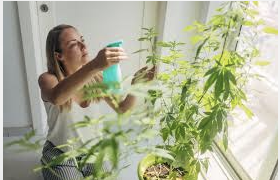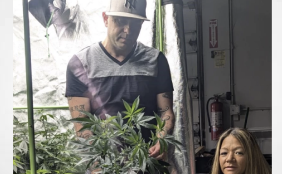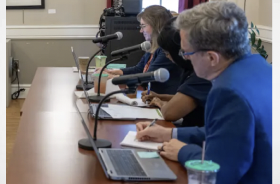Takeaways
- Oversupply is seen as a positive as it indicated incorporation of grey & black markets
- $198 million in state and local sales tax revenue generated since legalization
- State has 2,100 licensees
- Latest study designed to encourage sensible policy development
Here’s the statement in full
January 31, 2019
OLCC Provides Oregon Legislature with Recreational Marijuana Supply and Demand Study
Portland, OR — Today the Oregon Liquor Control Commission provided the Oregon Legislative Assembly with the 2019 Recreational Marijuana Supply and Demand Legislative Report required by ORS 475B.548.
2019 Recreational Marijuana Supply and Demand Legislative Report
A Letter from OLCC Director Steve Marks
Oregon’s Public Policy Approach to Support Legal Marijuana Production and the State’s Abundant Supply: The Course for Seeking the Right Balance
The Oregon Liquor Control Commission is grateful for the opportunity to produce for the Oregon Legislature a comprehensive examination of the amount of marijuana accounted for and contained within Oregon’s regulated recreational marijuana market.
Let me first acknowledge that we have a considerable supply of marijuana in our state’s recreational marijuana system. That licensed Oregon cannabis growers have become successful in producing this volume of marijuana is due in no short order to the intentional choices made by Oregon voters and policy makers. Now we find ourselves at a crossroads where our state’s history with marijuana and the future of cannabis commercialization meet.
Oregon’s unique geography and climate are qualities that have enabled generations of Oregon farmers to produce copious amounts of cannabis. The illegal export of Oregon cannabis has been taking place for decades. For Oregon, producing a lot of marijuana is not new news; producing a lot of marijuana that is tracked in the legal system is.
Recognition that cannabis is woven into the state’s cultural fabric initially emerged as institutional tolerance when Oregon became the first state in the country to decriminalize marijuana possession in 1973. Greater acceptance of cannabis occurred in 1998 when Oregon, following California’s lead two years earlier, established a medical marijuana program. A broader embrace of cannabis took place when Oregon voters approved Measure 91 in November 2014, and became the 3rd state to legalize recreational marijuana.
With the debate around legalization largely settled, Oregon’s elected officials began making annual adjustments during legislative sessions beginning in 2015. Each legislative modification to Oregon’s regulated cannabis system has attempted to improve the industry’s economic stability by removing barriers to entering the market while at the same time enhancing regulatory compliance to address public safety concerns while withstanding federal scrutiny.
Oregon is not creating a new industry, it is converting an illegal cannabis production economy, and a loosely-regulated medical program, into a well-regulated legal market
Oregon oversupply is a sign that policy choices made to attract illegal and grey market producers into the new commercial system have been successful; this was a start-up challenge Colorado and Washington didn’t have to face. Oregon medical marijuana growers had long been suspected of diverting into the illegal market so it was important to attract these well-established producers into the OLCC’s new regulated recreational marijuana program.
To entice medical as well as formerly illegal growers into Oregon’s legal market the state lowered the barriers to entry with low license fees and taxes and chose not to limit the number of licenses. This approach fulfilled the immediate objective to absorb medical marijuana providers into the OLCC market, but it has led to industry churn as businesses face mounting cost pressures and attempt to position themselves for the long term.
The ongoing objective is to account for and contain legally produced cannabis within Oregon, create consumer confidence in the legal market, and establish compliance performance boundaries for marijuana licensees.
By requiring the tracking of marijuana flower and marijuana products, CTS has provided the most reliable accounting for legally produced cannabis in Oregon. For the first time, the state’s production of marijuana is accounted for and there are consequences – criminal and administrative – for licensees that divert product from the regulated system.
Oregon’s legal market has created a new growth industry with quality product, a diversity of choices, and transparent information for consumers
Oregon’s successful transition to a regulated adult-use market has provided customers an unprecedented degree of consumer safety confidence. Oregon’s testing program and packaging and labeling requirements are considered best-in-class and are being replicated by other states that have legalized adult use cannabis. This confidence has contributed to consistent growth in retail activity as evidenced by the $198 million in state and local sales tax revenue generated since legalization.
On the demand side the establishment of a legitimate market has resulted in consumers shifting their purchase activity away from the illegal market to licensed retailers. The conversion of most OMMP dispensaries to OLCC retailers, coupled with the OLCC’s deliberate effort to allow medical grade products for sale at retail, has established a statewide retail network, in which medical marijuana patients are also able to obtain tax-free products.
Industry innovation has continued since the OLCC’s establishment of and oversight over the marijuana supply chain in January 2017; today consumers are able to find a selection of products reflecting a marketplace with 2,100 licensees. As more consumer choices have been introduced and prices have decreased, sales have seen a corresponding increase.
A context for change
Oregon’s current supply in the legal market is a reflection of successful policies to move production into the legal system. The adoption of the legal system by recreational consumers and medical patients for the purchase of branded and tested cannabis products is a strong indication that the legal system is winning the battle against the illegal market.
At the same time, Oregon regulators and law enforcement, with support of the licensed industry, are developing and utilizing new resources and tools to confront illegal market activity. Now that the legal system has successfully taken hold, policy makers can make adjustments combined with market forces to work towards a sustainable economic balance between supply and demand.
The economic condition of the market that the OLCC will be regulating in the next two years remains uncertain. Just as it took time to establish legal alcohol markets after the repeal of alcohol prohibition, the development of the legal marijuana industry will require patience. In less than three years Oregon has made substantial progress toward creating a controlled, economically viable and well-regulated cannabis industry. While regulations to control and manage this new industry will continue to change, no matter the future course, the ability to support existing and aspiring licensees and take enforcement against those that don’t follow the rules will be a crucial function for the state and the private sector businesses that have entered this industry.
A primary objective of establishing Oregon’s regulated market was to contain cannabis legally produced in Oregon from diversion into the illegal market. Oregon’s legal cannabis market and its framework for accountability and containment indicates the system is performing as it was designed.
At this point we have another opportunity to make intentional choices. With market mechanisms and thoughtful public policy, the state of Oregon and the OLCC can continue to control what we’ve created – to reinforce and strengthen the regulatory system we’ve built in just three short years. One corrective policy tool proposed by the Governor would allow the OLCC to place a moratorium on licenses. As the 2019 legislative session progresses other ideas may emerge.
We expect any guidance that the Governor and Legislature may develop during the 2019 legislative session will strengthen the continued implementation of a regulated marijuana system that balances public safety concerns with the vision of Oregon voters.
The 2019 Recreational Marijuana Supply and Demand Legislative Report is more than just about numbers. Its substance and specific methodology reflect a state-of-the-art approach for evaluating use and demand and normalizing values and equivalencies of differing cannabis products as produced and sold in the Oregon marketplace. While not infallible, this study provides a sound base for the discussion and debate of policy development. The OLCC appreciates the work and time its talented staff and outside peer reviewers have spent to bring forward this public data on legal marijuana production in Oregon.
A copy of the 2019 Recreational Marijuana Supply and Demand Legislative Report . Can be found on the OLCC on the Recreational Marijuana main page under the Government Resources column.
Or Read It Here
2019 Supply and Demand Legislative Report FINAL for Publication(PDFA)
















